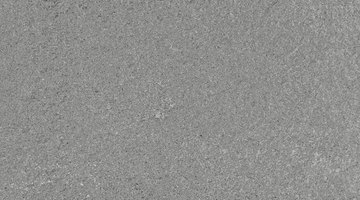How to Stub Out Pipes in Concrete Slab
Pipe stub outs are the sections of pipe that feed from the lines run underneath a slab or building, through the slab, then connect to appliances, or eventually continue on to the upper levels of your building.

You must stub out toilets, water lines and electrical conduit, as well as main utility lines that enter the building from below the foundation and rise up into the building. You can stub out pipes in a concrete slab easily because the stub out is put in place before the final grade for the concrete slab is prepared, but you must be very skilled in making the necessary connections for the pipes.
Things You Will Need
- Project plans
- Tape measure
- Shovel
- Pre-cast angle fittings
- Pipe adhesive (if needed)
- Socket wrench (if needed)
- Bolts (if needed)
- Pipe caps
- Pressure test unit
- Duct tape (if needed)
- Orange spray paint (if needed)
- Caution tape (if needed)
Tip
Clearly mark your stub out pipes by painting them orange or tying caution ribbon to them. This will help prevent them being inadvertently knocked askew by other trades working in the area.
Warning
Do not pour concrete over any pipe that has not been pressure tested. If the pipes are not pressure tested you will have no way of knowing if they were damaged during the backfill process and you will be liable for any repairs needed because it will be assumed it was the weight of the concrete that caused the problem.
-
Locate the position on your project plans where the pipes need to turn up through the slab to connect to the next level of plumbing. Use a tape measure and the dimensions on the plans to locate this point on the actual installed pipe.
-
Install the appropriate pipe fitting to allow for the pipe to turn up and stub out of your slab. The fitting will depend upon the kind of pipe you are installing. PVC pipes require pre-cast PVC angle fittings; PVC adhesive and metal pipes require pre-cast metal fittings and must be bolted in place.
-
Measure from the inside threads of the up-turn of your fitting (metal or PVC) to a point that is a minimum of 8 inches above the finished height of your slab. For some stub outs, like those terminating in appliance connections on top of the slab, you can carry the height of the stub out to the height of the appliance connection (see your project plans for the details and dimensions). Doing so will save you a step later in connecting the appliance. Select a pipe that will be the correct length for your stub out and install it into the up turned portion of the fitting.
-
Cap all the pipes with pipe caps (metal or PVC).
-
Attach the appropriate pressure test system for the pipe you have installed and conduct the test following the manufacturer's instructions. For most pipes, such as gray water, gas and water lines, an air test is sufficient (check the General Instructions section of your project plans to confirm that it is acceptable).
-
Once you have conducted the pressure test and the pipe system has passed, wrap the pipe cap in duct tape (just where it overlaps the pipe) to prevent any concrete from splashing up into the threads. If you have installed any electrical conduit (which does not require a pressure test), tape the opening to the conduit closed with duct tape to prevent concrete from falling in.
-
Backfill around the pipes. Use a shovel to pack dirt around the pipe until the dirt is level with the bottom of your concrete slab. Make sure, as you backfill, that the pipe remains straight.
The Drip Cap
- Pipe stub outs are the sections of pipe that feed from the lines run underneath a slab or building, through the slab, then connect to appliances, or eventually continue on to the upper levels of your building.
- The fitting will depend upon the kind of pipe you are installing.
- Select a pipe that will be the correct length for your stub out and install it into the up turned portion of the fitting.
- Cap all the pipes with pipe caps (metal or PVC).
- If you have installed any electrical conduit (which does not require a pressure test), tape the opening to the conduit closed with duct tape to prevent concrete from falling in.
Resources
Writer Bio
Cassandra Tribe has worked in the construction field for over 17 years and has experience in a variety of mechanical, scientific, automotive and mathematical forms. She has been writing and editing for over 10 years. Her areas of interest include culture and society, automotive, computers, business, the Internet, science and structural engineering and implementation.
Photo Credits
- Jupiterimages/Photos.com/Getty Images
- Jupiterimages/Photos.com/Getty Images
More Articles



